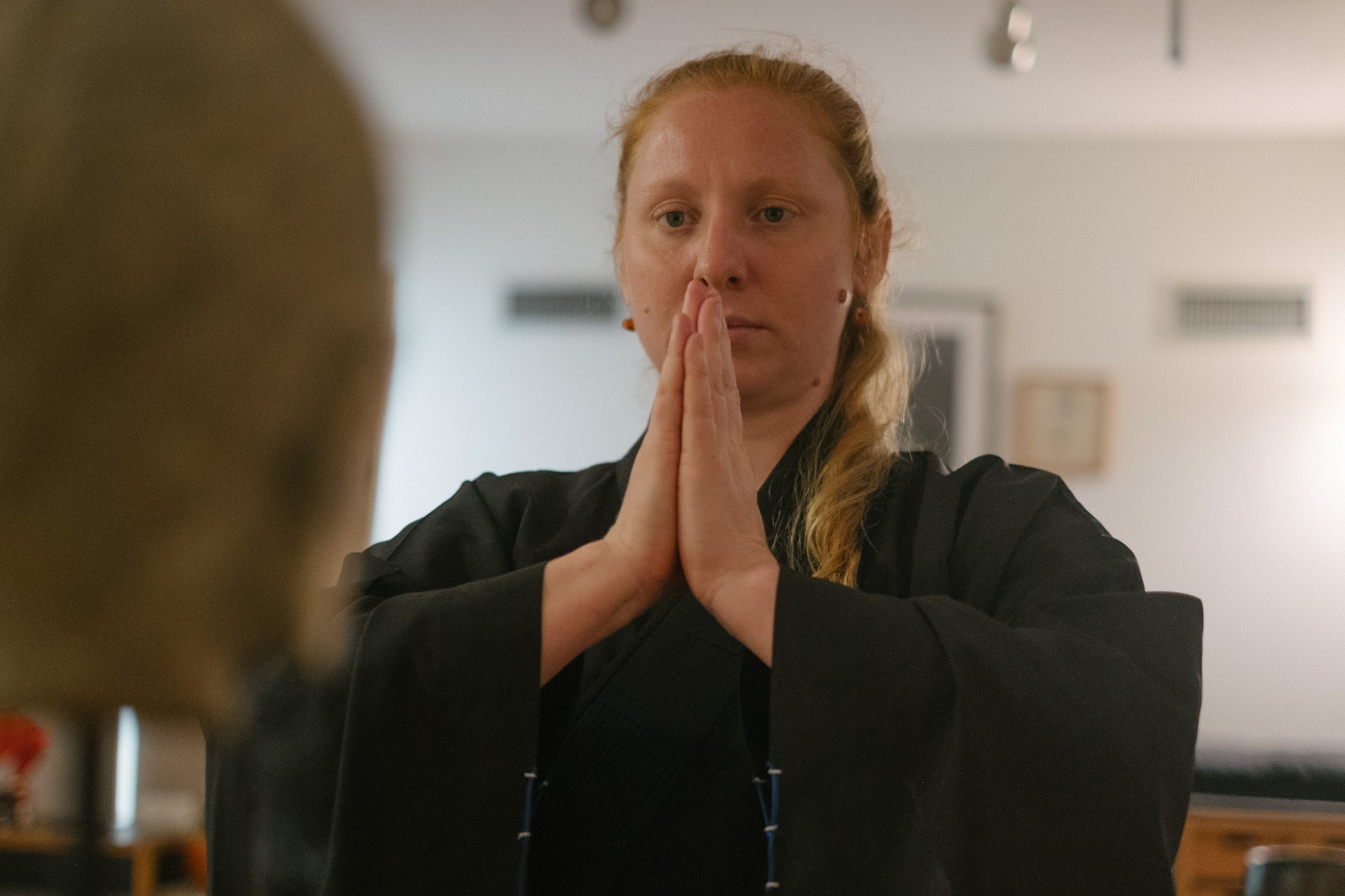When were you first exposed to dharma?
My first year of high school I attended an independent Episcopalian school that required us to take a course teaching “world history” and “world literature” as seen through the lens of the religious traditions of the world. The course was constructed explicitly as a rite of passage, and the challenges were so intense that every one of us was transformed by the experience. This was my first introduction to the Vedic teachings and the basics of Buddhism. I also learned about the contested origins of Christianity, the tradition my family raised me to follow, and my ideas about the nature of reality shifted a lot in the years to come. I started practicing meditation as a teenager; after college I went to Plum Village in France and took the Five Mindfulness Trainings with Thich Nhat Hanh. Later on, I spent a lot of time learning from the land and internalizing indigenous knowledge systems; they also influenced me greatly. Like languages, one can learn more, but that never takes away from the ones you already speak, and the preciousness of the moments and relationships through which you learned them. I am a part of all the wisdom traditions that I have practiced, and they are a part of me.
How has the path manifest in your daily experience?
My practice of awareness has helped me become better at meeting the suffering of life with acceptance, gratefulness and even joy. When I lost the ability to sleep for two years due to a traumatic event, my work and my marriage fell apart. Instead of asking “Why me,” my question was “How can I use this experience as an opportunity to understand my true nature– to wake up to the part of me that exists beyond all the agreements and experiences that I believed were my identity?” It’s been very helpful to have a practice that reminds me to keep coming back to what is, instead of getting tied up in fears and mental projections. Nothing can take away the fact that we’re born, and we age; we become ill, and we die. The dharma helps us to see that there are joyful ways of participating in the process!
As a consultant, I’ve started incorporating basic mindfulness practices in the work that I do with teams, but I also make sure to teach about interdependence, compassion and gratefulness as well. Awareness of sensation is a first step, but we have to remember the purpose of mindfulness!
Who is your teacher(s)?
I’ve had more teachers than I can count! The land is my teacher; the mountains, the sea, the plants, the elements themselves. My family members are my teachers; my friends, my students and my clients are my teachers. My first dharma teacher was Thich Nhat Hanh, the Vietnamese peace-advocate monk who founded the Order of Interbeing. I have also studied Tibetan Nyingma and Vajrayana teachings with Anam Thubten, and encountered the Ngakpa tradition of Buddhist Yogis through Pema Khandro.
How long/often do you meditate?
I meditate daily. On the weekends, I’ll sit for 45 minutes in the mornings. Weekdays I aim for 20 minutes in the morning, and 20 minutes in the evening. Sometimes that happens, and sometimes it doesn’t. I let go of being rigid about the routine a long time ago; the important point is that I do the practice, and keep doing it. There is no vacation from this kind of inner and outer work. Of course, the activities of life have a flow; we have to be gentle with ourselves and see that different things are needed at different times. I believe that it is beneficial to be constantly engaged in processing my experiences through meditation and prayer, so I have a routine that helps me keep doing it. If we practice going to the cushion and sitting down every day, then we are clearing the path for that inner work to take place. Some days I may be able to sit only for ten minutes because of mental agitation; another day there are only three minutes before a child comes bouncing in. I don’t live in a monastery. What matters is that I keep returning to the cushion. What matters is that I practice at every opportunity– sacred silence on the cushion, chanting ngondro on my train ride home, breathing compassion in and out during a disagreement with my boyfriend, walking barefooted in the forest and singing my gratitude to the trees. For a while now I’ve been going to about three short retreats each year; I find that dedicating time to go deeper benefits both my practice and my awareness.













































































